Guest editor St. Vincent and Alex Da Corte on making the dark and uncanny world of All Born Screaming
St. Vincent is a Wallpaper* guest editor for 2024. Here, the shape-shifting musician deliberates with her long-time collaborator, conceptual artist Alex Da Corte, about the human condition, finding inspiration in dark places, and the merry dance with chaos that is a creative's path
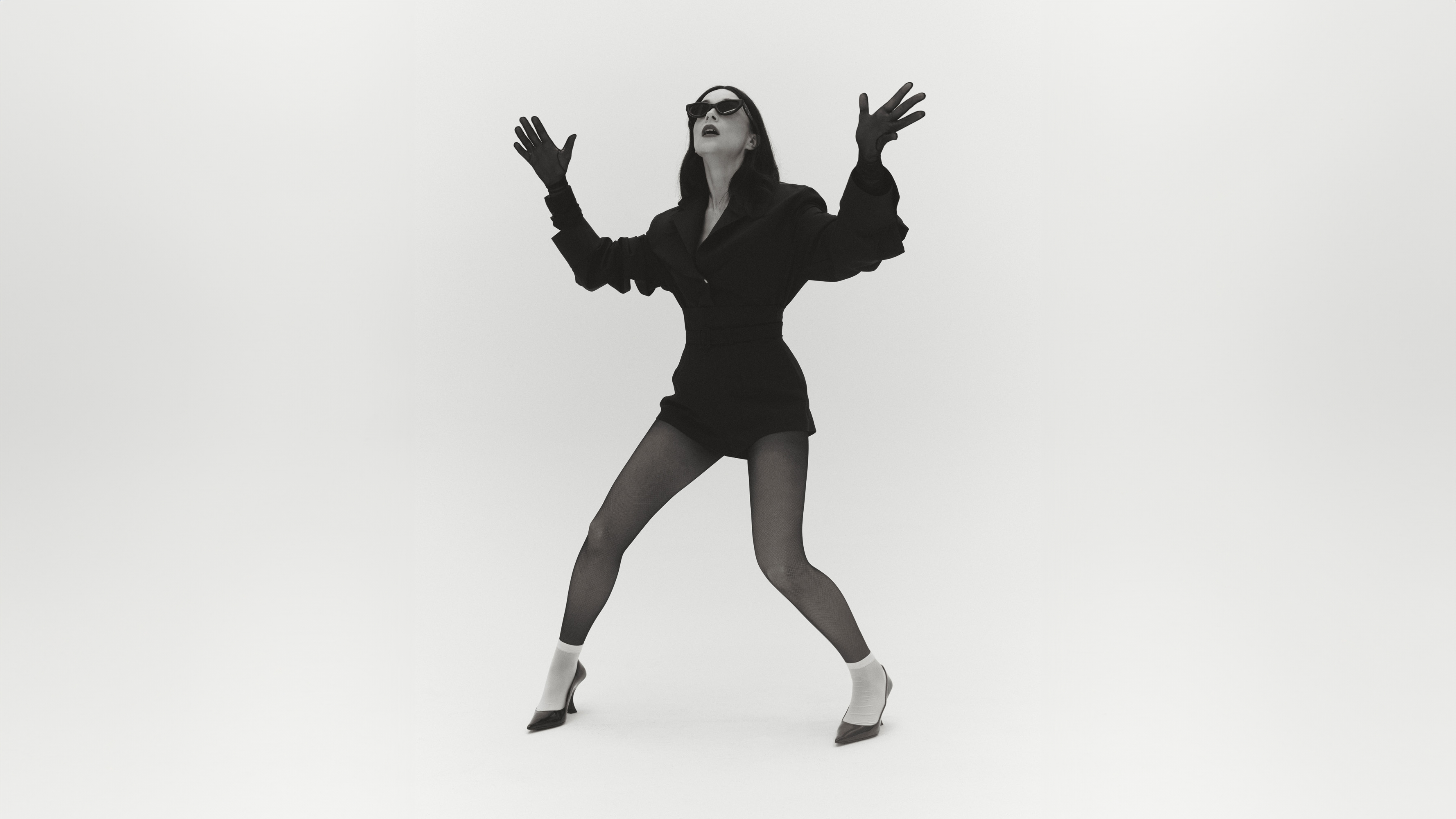
St. Vincent
Since the release of her 2007 debut album, Marry Me, the Texan-born, guitar-shredding St. Vincent has continued to reinvent herself, dabbling in synth-pop, hard rock and everything in between. Like Bowie before her, she’s played with, and prodded at, the idea of persona. For the release of 2017’s Masseduction – a time she calls her ‘dominatrix at the mental institution’ era – she dressed only in latex, insisting journalists interview her (decidedly prickly) alter-ego inside a neon pink box. During 2021’s Daddy’s Home, she was a louche, 1970s gangster, in a flared two-piece and blonde bob wig. And for mockumentary The Nowhere Inn, directed by Sleater-Kinney’s Carrie Brownstein, she portrayed a heightened (and hideous) self-obsessed version of herself. ‘It wasn’t great for my career,’ she notes, dryly.
Wondering who St. Vincent would become next – and who she really is – has all been part of the game. But in 2024, that changed. Her eighth album, All Born Screaming, is a ferocious exploration of what it is to be alive; the sound heavier, the visuals dark and uncanny. She has ditched the costume and character and is, perhaps for the first time, just Annie Clark. Seventeen years into her career, we invite a truly shapeshifting artist to take the reins of Wallpaper* as guest editor to understand her multidisciplinary creative process, what fuels her fire, and where this bizarre road might take St. Vincent next.
An opening essay by St. Vincent
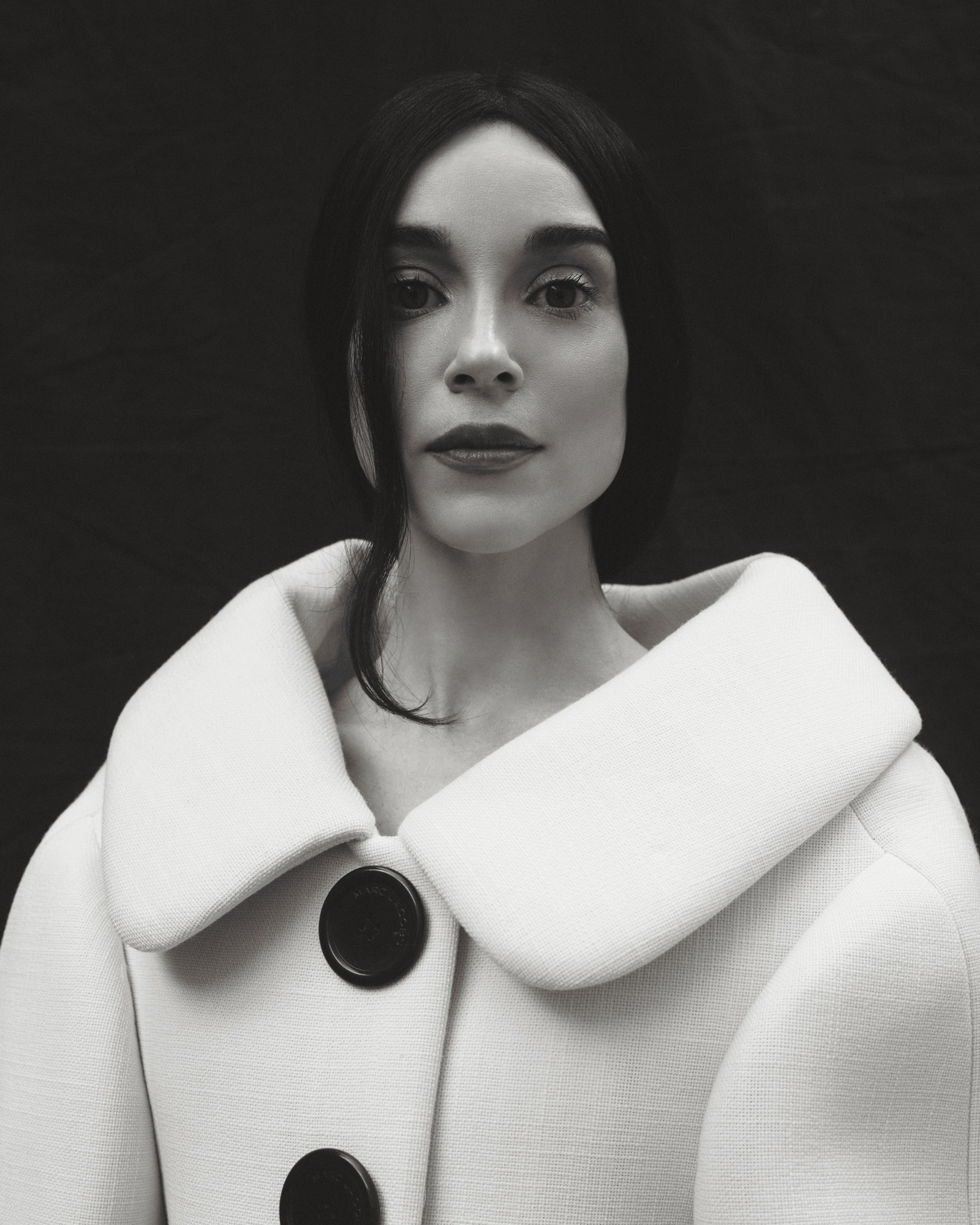
St. Vincent photographed by David William Baum
'Alex Da Corte and I are walking through the Prado in Madrid, surrounded by the treasures of the art world. Yet some, despite their beauty or painterly perfection, are so easy to walk past. Another era. Jesus and Mary. Portraits of nobles, kings and queens. More Jesus and Mary.
Alex points out the pre-Renaissance genre of ‘world landscape’, before painters knew how to paint perspective; before there was a vanishing point, before there was scale, where every object in the frame – no matter the importance – carries the same weight. It makes me think of the internet. I say as much to Alex and he laughs.
We are not studious tourists or completists. We haven’t brought a checklist. We do not feel compelled to study every brush stroke, read every placard, squint and hum. We float, pulled along by a supernatural current of instinct and chance. We only stop and stare at what calls to us from eternity. Yes, yes, centuries ago. Different time, different rulers, different plague, different wars, but the same human condition. This is it: eternity. What we try, like mad but occasionally contented Sisyphi, to channel into our own work.
We are called to a small room: Goya’s Black Paintings. The temperature falls 15 –no, 20 – degrees. You felt that too, right? The air, like a gunshot. I immediately lock eyes with Saturn Devouring His Son. I don’t know why, but I understand this mania, this violence. How many sons did it take to get to THIS look in his eyes? Was this the taste of first flesh? The third son going down? The final gnashing and gulp?
We want time-tripping eternal mirrors. We want to be called from the void. We want to be told – tell us, yes, yes – every generation, every century, new rulers, new laws, new plagues, but the same human condition. Welcome to being alive. Welcome to the fire. Welcome to your ecstatic hiccup in a roiling eternity. We are all born screaming. ALL born screaming. All BORN screaming. All born SCREAMING.'
Receive our daily digest of inspiration, escapism and design stories from around the world direct to your inbox.
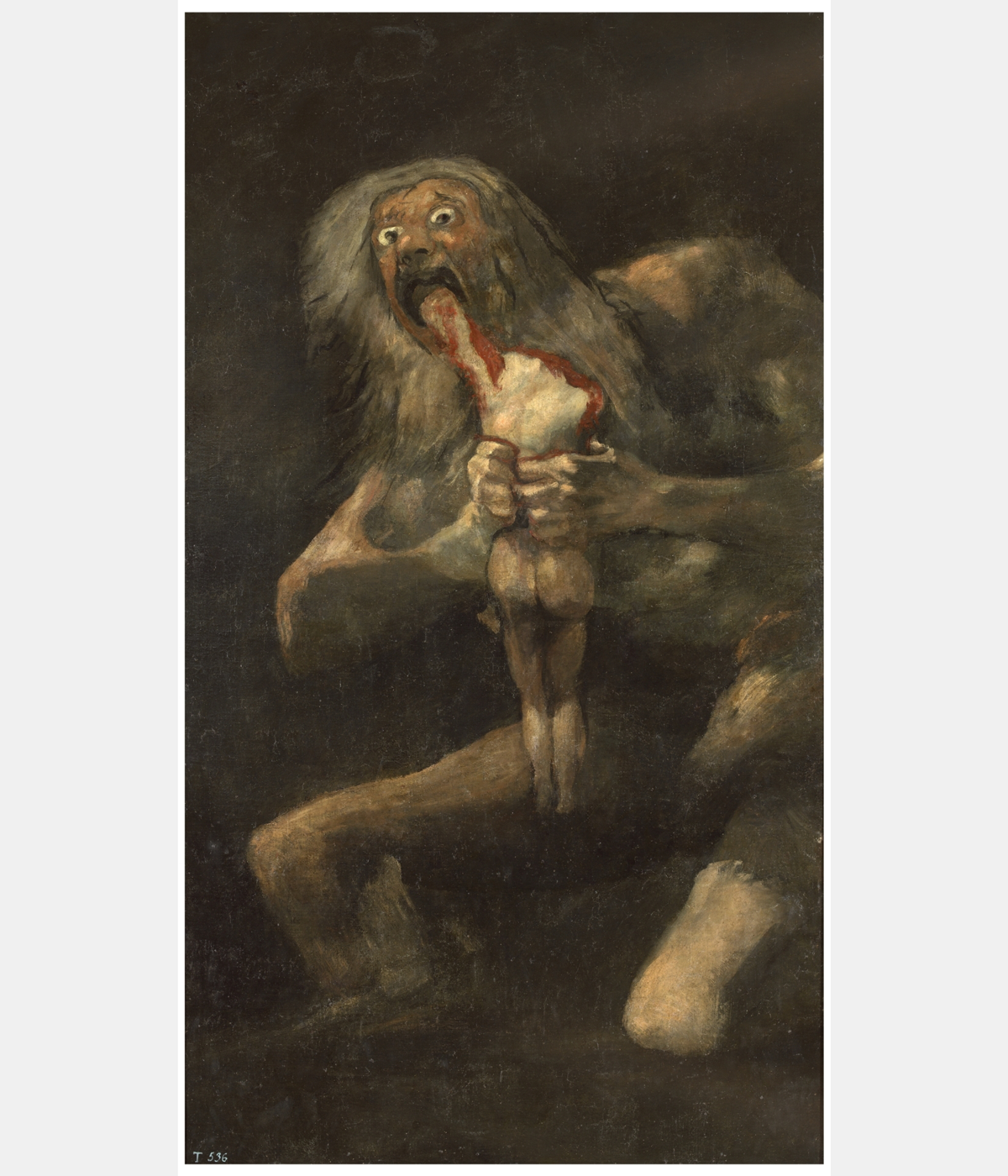
Saturn Devouring His Son, c. 1820-1823, by Francisco Goya
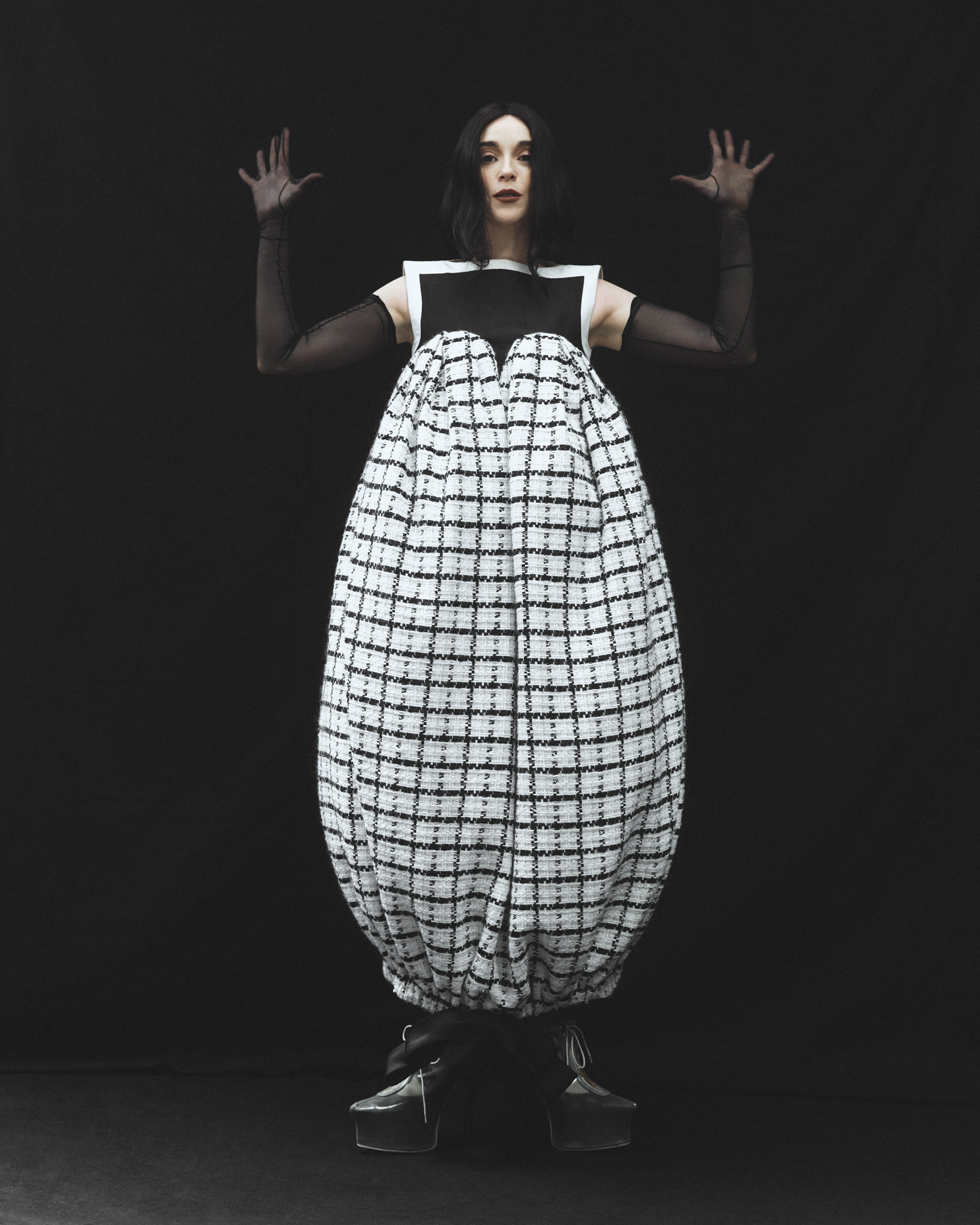
St. Vincent photographed by David William Baum
Wallpaper* guest editor St. Vincent in conversation with Alex da Corte
St. Vincent When thinking about making All Born Screaming, I want to touch on blackness and colour – light and the depth of the void. In making the album imagery, you painted the set black. It was the idea that this is a physical space – you can see the skid marks on the floor – but it’s also a void. There was something that felt so powerful about that.
Alex Da Corte Being in the presence of that much of one colour in the vast space we were in – it’s undeniable. There’s the fact that the sum total of matter makes for black. But the lack of all light is black. You have this feeling of void, but also this feeling of totality? It’s a nice space to be in. If we’re thinking about births, deaths or the state of the world – it can be all things. There are many lenses through which you could view this thing, but that polarising energy, I think, is what we were after.

St. Vincent photographed by Alex Da Corte for the All Born Screaming album campaign
SV In the past, when I’ve brought in a ‘creative director’, it was someone with a background in advertising. Working with you, we were artists. We share a similar process, which is that we both believe that we will find it. You didn’t come in and say ‘Look kid, I got a great idea of how I’m gonna sell you. Here’s how we’re gonna package it.’ We said OK, we’re going to have conversations, we’re going to look at art together, we’re going to go out into the world and find it. Of course, your lens is your lens. But seeing things together and having those moments of looking at the same thing – and I can’t say that we had the same emotional reaction – but we reacted very strongly to the same things at the same time in the same space. And that really informed the whole process. The edict for me with this record was very much: work with your friends, work with people whose work you love.
ADC There was no mood-boarding. In the end, after so many hours of talking and looking, I remember very clearly one drawing I made – of a person on fire – and it just clicked. It was very much chasing a sketch and you can’t promise it will come, but if it does, then great.
SV This visual world you’ve created and the Broken Man video – there was nobody in the room creatively, except you and me.
ADC It was really raw. We were both figuring it out in real time. Otherwise, it would feel like work. And some days, it was really fucking hard, and we didn’t know what it would be. We just knew we had to make it.
SV Even when we didn’t know what it was, there was never a point when I didn’t know if we were going to get there.
ADC No, because we trusted each other and we talked so fucking much. That’s not a complaint, but we were asking how is this feeling? Is this doing the thing we want it to do, which is to dance alongside your music?
SV We made an image for the cover – and I don’t want to be too self-aggrandising – but you made an image that’s iconic. And in a little black square, it says everything.
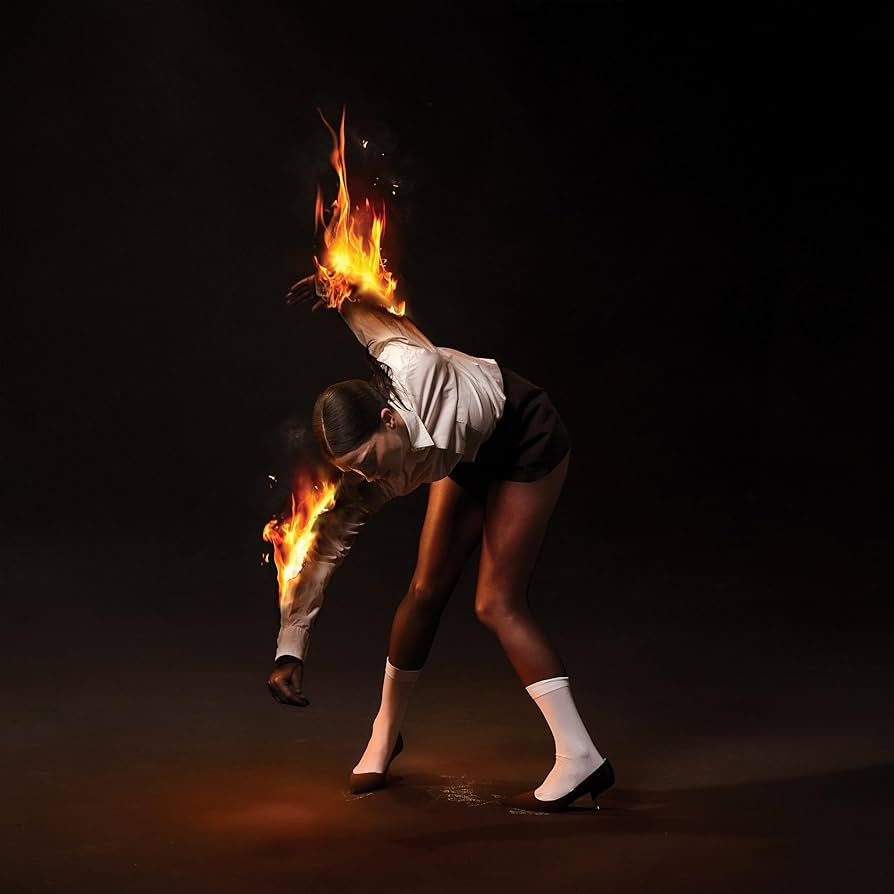
All Born Screaming album cover, shot by Alex Da Corte
ADC We were looking at icons. We started our research in the Prado and we saw every hit painting. If you start by looking at things that have stood the test of time, you’re in a good place. It’s interesting to revisit them and know this is outside of fad or what’s cool. That was a product of long conversations and also just a sign of the times.
SV A sign of the times how?
ADC We’re both sensitive people and when your heart responds to a painting, a photograph, a piece of music – these works of art have value because good art mirrors what the world is. If there’s something painted in 1500 that’s still mirroring the world, then damn! That’s what it means to be human. If it’s speaking to us now, it’s because we’re feeling and searching for how to understand the world. And if you see some bit of it reflected back to you in a painting, then you follow those signs.
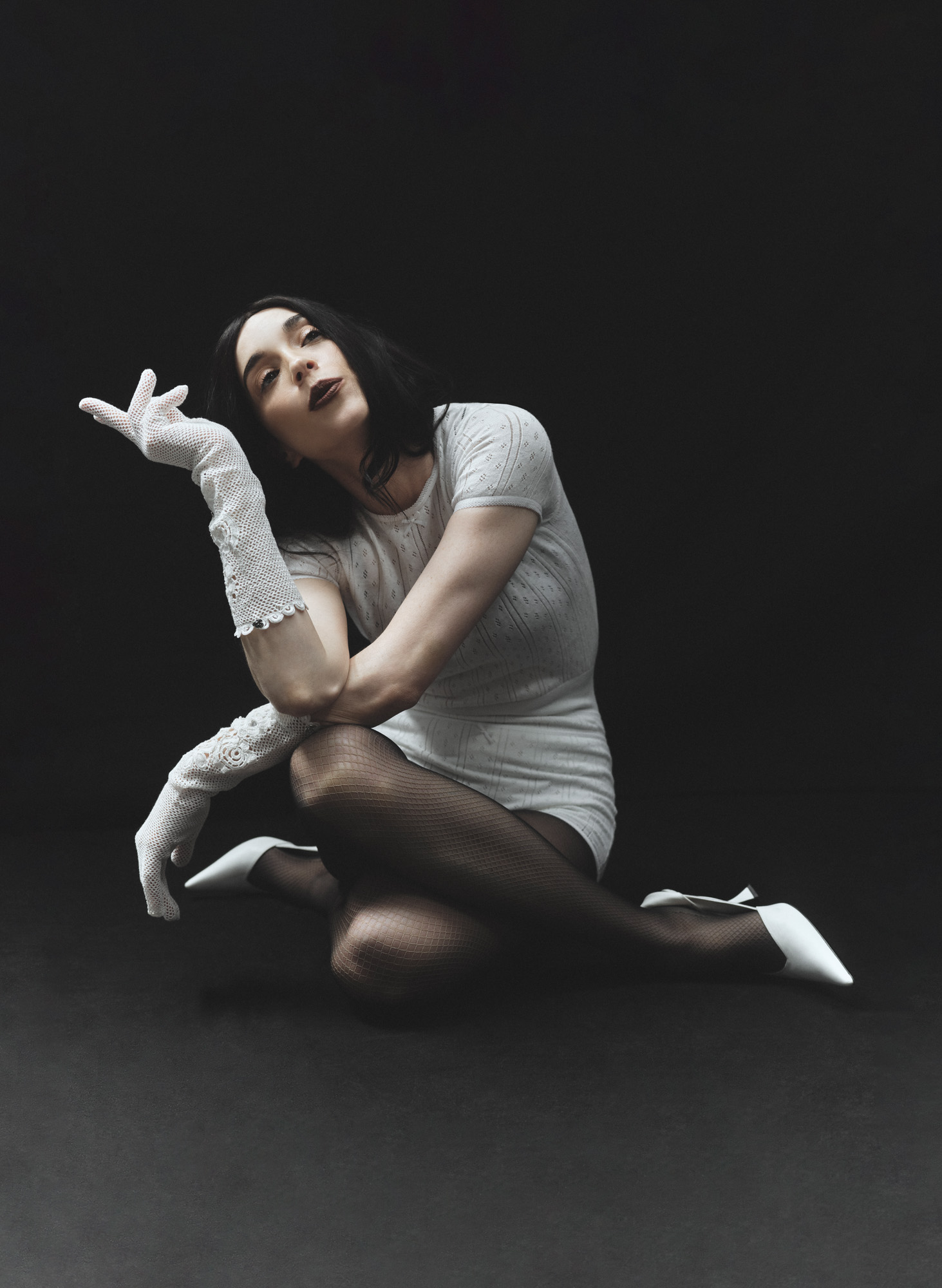
St. Vincent photographed by David William Baum For Wallpaper* October 2024
SV Maybe there was a different plague in the 1500s, but the human condition remains the same. The emotional response and the electricity in the room when we saw Goya’s Black Paintings, I’ll hold on to that. We didn’t go to the Prado to see those, but the look in Saturn’s eye, that crazed look...
ADC You can’t unsee it. That’s what it means to be creative. You don’t need to do it. If there’s a plague, you don’t need to be making art. Just seeing all of those Black Paintings altogether, it had this energy that was insane. That’s what stayed with us. How do you make something that has the same gravity? We wanted it to be grave because it’s a grave time. And we respect our time. We’re not just gonna be fucking around. Those paintings weren’t fucking around.
SV That was a big takeaway. Between the subject matter in the album, which is black, white and all the colours of the fire, you’re alive and then you’re really fucking dead, and the rest is a dance with chaos.
ADC Saturn Devouring His Son is both fully alive and dead – it’s in action, it’s animated. It’s a snapshot with a past and a future. Icons should be free and have a life of their own – with a past and a potential future. And I think that’s what we did with the album cover image – you can imagine what’s happening before or after the image was taken. That’s also what music is. It’s this beautiful thing that isn’t fixed.
SV We caught it in the middle of things. It allows people to be curious – how did it get there? Where is it going? What is the fire? Is she moving so furiously because she set herself on fire? Or trying to put it out?
ADC Is she a witch? You were dressed like a witch for a lot of the time we spent together. You were wearing a nylon, trash-baggy dress…
SV My trash bag dress! I loved that. But yes, everything had to feel uncanny. It had to feel close to something you’re familiar with, but that pricks your senses so you don’t know how to feel about it. Speaking of optical illusion, I saw your show, ‘The Daemon’, at the Matthew Marks Gallery in LA, and was so struck by the whiteness. That white sunken living room. White, white, white.

St. Vincent on the cover of Wallpaper*, October 2024, shot by David William Baum
ADC We couldn’t be in the white room and have conversations in there – blinding west coast sun in a white room was just too much, it was ricocheting in such an insane way. But there was another room, that was all black, which became a contemplative space.
SV In the black space, there was a perfect archway and I said ‘Alex, can we make one of these?’ Because something that helped clarify the album for me is that, musically, there are so many portals. Everything about the record is a portal, between life and death. What is the line that you step over into this new space? I didn’t know it at the time – I was just so energised by this beautiful archway that Alex had made – but in retrospect, it’s a sacred shape and directly relates to the life and death of the record.
ADC Ahead of making ‘The Daemon’ show, I couldn’t have anticipated how the different rooms would feel. Everything sounded different from one space to another, you felt different. The temperature felt different.
SV That’s one thing I wanted to say about the Goya room. I swear to God that the fucking temperature changed.
ADC I always think about seeing The Exorcist where everything is cold. But forreal, I suppose the lights were low, but it was definitely colder in that room.
SV It was palpable. It felt sort of supernatural. It was emotional. You showed me so many things that I fell in love with. Whether or not they directly influenced this work.
ADC We looked through hundreds of books. It was so many things until it wasthe thing it had to be. And that takes time. It was deeply emotional because we don’t take our time and our lives for granted.
SV One thing I want to touch on, as it pertains to making things that are righteous, is a lack of vanity. There was a concerted effort on my part to not be vain in any way. There’s no way to sing your guts out and be ‘Aren’t I pretty now, Daddy?’ And when you do try to preen, it’s creepy.
ADC It goes back to that painting we saw by the fantastic Alfonso Ponce de Léon – he’s preening, but he’s in a car accident. Yours was, ‘Aren’t I pretty, Daddy?’, but also ‘I’m on fire’. The whole performance was full of contradictions, which is what keeps you watching. It defies expectations. It lives in the world of the uncanny.
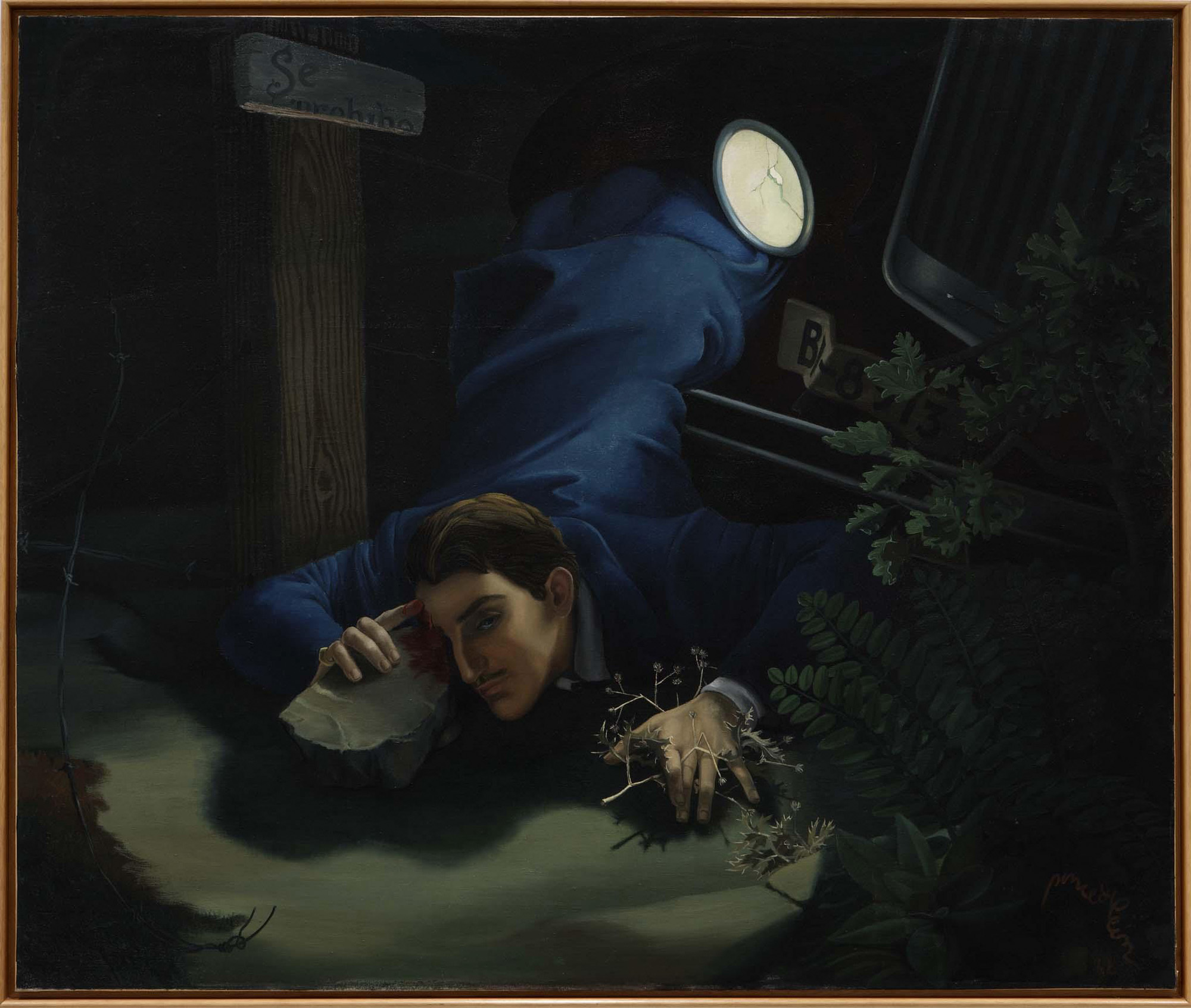
Autorretrato (Self-Portrait), 1936 by Alfonso Ponce de León
SV I wonder if we can laugh about the internal gatefold of the record. You built this beautiful space/non-space. It’s a street corner, but like from Who Framed Roger Rabbit?
ADC Cartoons are meant to be facsimiles of human experience, but they’re allowedto do the things you’re not able to do in the real world. They teach us lessons, show us why our culture is falling apart or what violence looks like. A movie that puts these things at odds with each other, and makes them work out their differences, is endlessly appealing to me.
SV There’s a wonderment that I still get from Who Framed Roger Rabbit?
ADC There’s that line, ‘I’m not bad, I was just drawn that way’. It’s so perfect. There’s a play on being drawn and what we are drawn to. How do we nurture our fetishes, or even understand them? Why do we like the things that we like? That’s why that film continues to be ripe with information that feels worth revisiting, even the slightest reference to it, with a sidewalk and a kerb and a sign that says ‘This is city’. Whose city? What city? Good city? Bad city? Toontown or Hollywood?
SV Playing with you is sometimes like going to Toontown. We referenced Sophy Rickett and her photography project Pissing Women. I just want to point out something in the uncanny and hilarious… We tried to do the peeing shot practically. Not where I was actually peeing but was squirting water from my genitalia. But the thing that makes me laugh so much is that there’s no way anatomically that’s how I would pee – like a man.
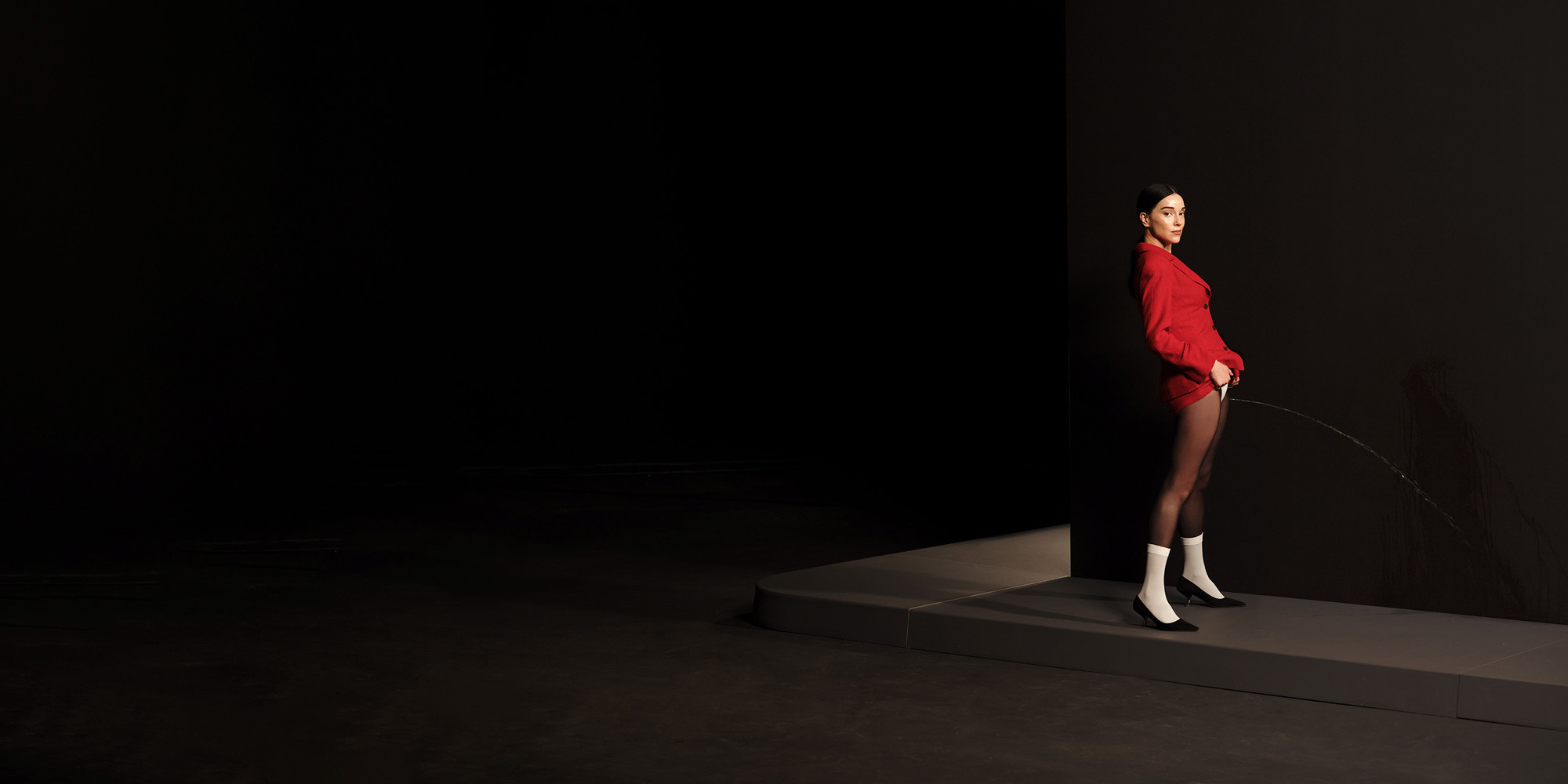
St. Vincent shot by Alex Da Corte for All Born Screaming
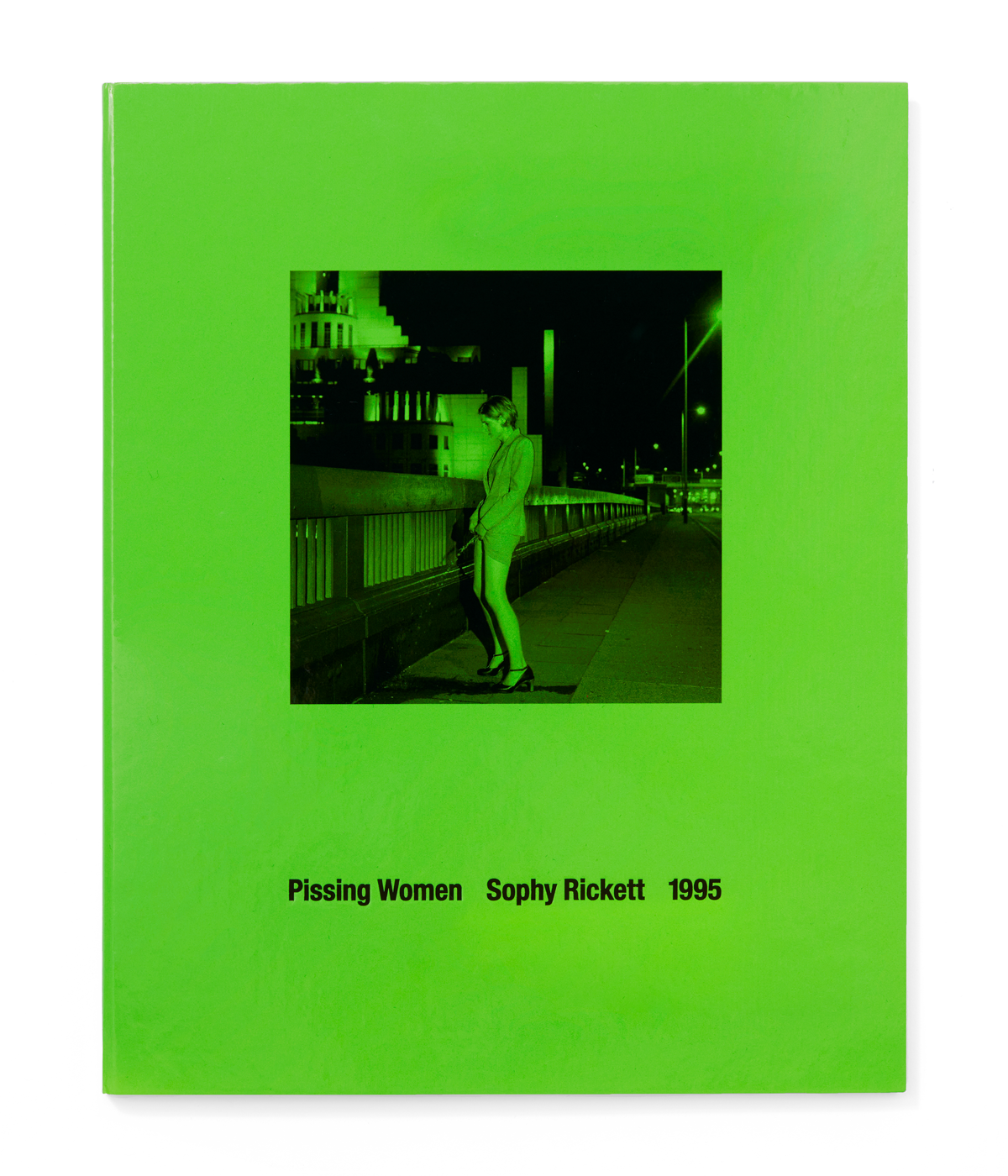
Pissing Women, 1995, by Sophy Rickett, first edition, 2023, Climax Books
ADC Like Calvin and Hobbes! That project is so fucking awesome – that Rickett was documenting people pissing and also getting reprimanded by the cops. It’s all so righteous and confronting taboos and expectations.
SV It’s a really great person to tip the hat to. There were so many references. One thing, when going through your art books, was that we kept getting drawn to a lot of the work of artists who were in the midst of a plague.
ADC So many of the references were by queer people who were dying of AIDS or had friends who were dying. The ways in which people were finding poetry or visuality during that time felt real. We’re in the midst of such hard times and to still try to make and to be a mirror to a time – in the way those artists were doing – we look to them to be our guardians throughout this.
SV I like that idea of guardians. Different from every other record I’ve made, I had a feeling that, unless you come at this with righteousness in your heart and a lack of ego, the music, or the thing, will not reveal itself to you. You aren’t going to get the thing you didn’t know you were looking for if you’re not coming at it with a purity of heart.
ADC I agree.
This article appears in the October 2024 issue of Wallpaper*, available in print on newsstands from 5 September on the Wallpaper* app on Apple iOS, and to subscribers of Apple News +. Subscribe to Wallpaper* today
Charlotte Gunn is a writer and editor with 20 years experience in journalism, audience growth and content strategy. Formerly the Editor of NME, Charlotte has written for publications such as Rolling Stone, CN Traveller, The Face and Red.
- St. VincentGuest Editor
-
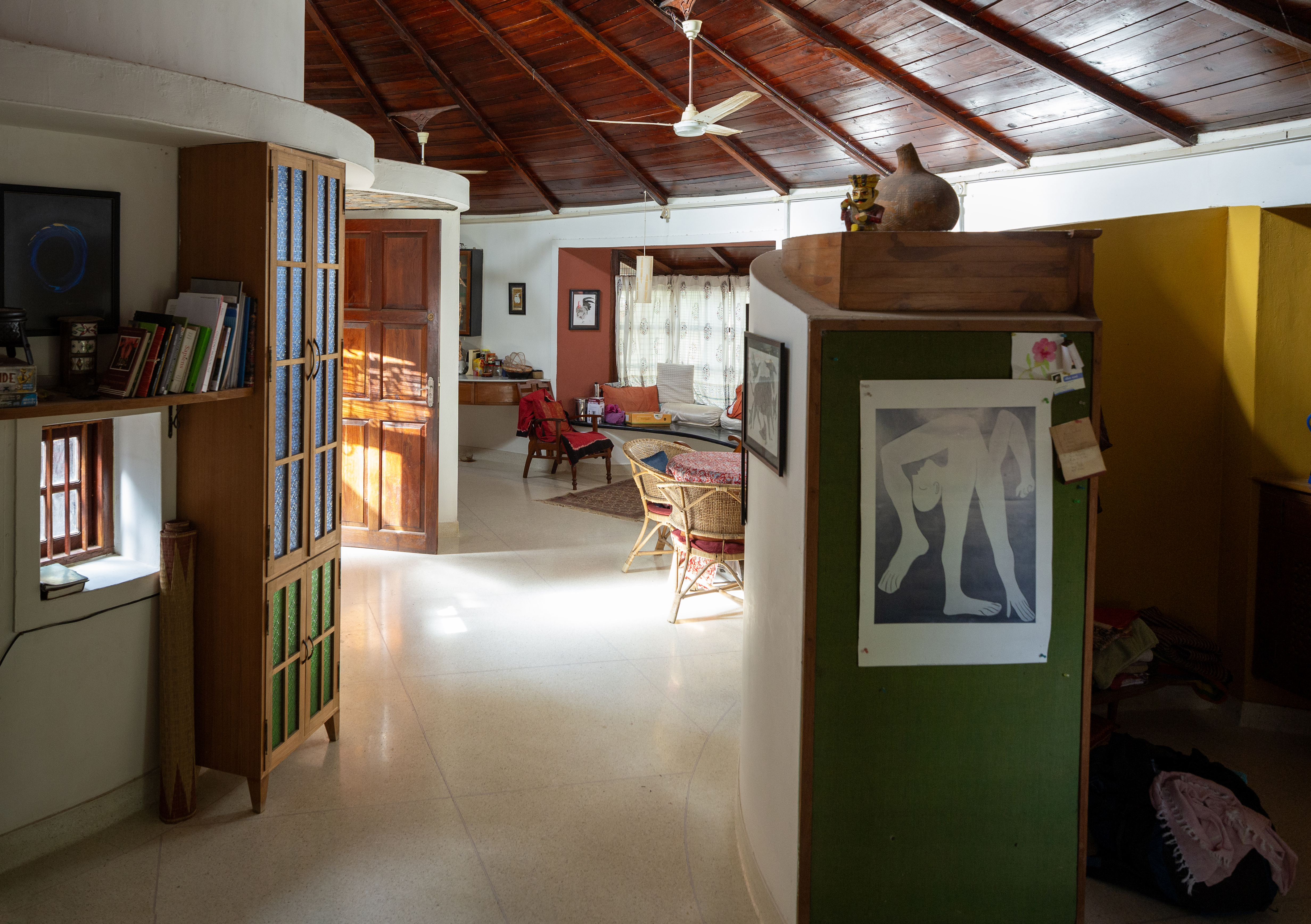 Inside a creative couple's magical, circular Indian home, 'like a fruit'
Inside a creative couple's magical, circular Indian home, 'like a fruit'We paid a visit to architect Sandeep Virmani and social activist Sushma Iyengar at their circular home in Bhuj, India; architect, writer and photographer Nipun Prabhakar tells the story
-
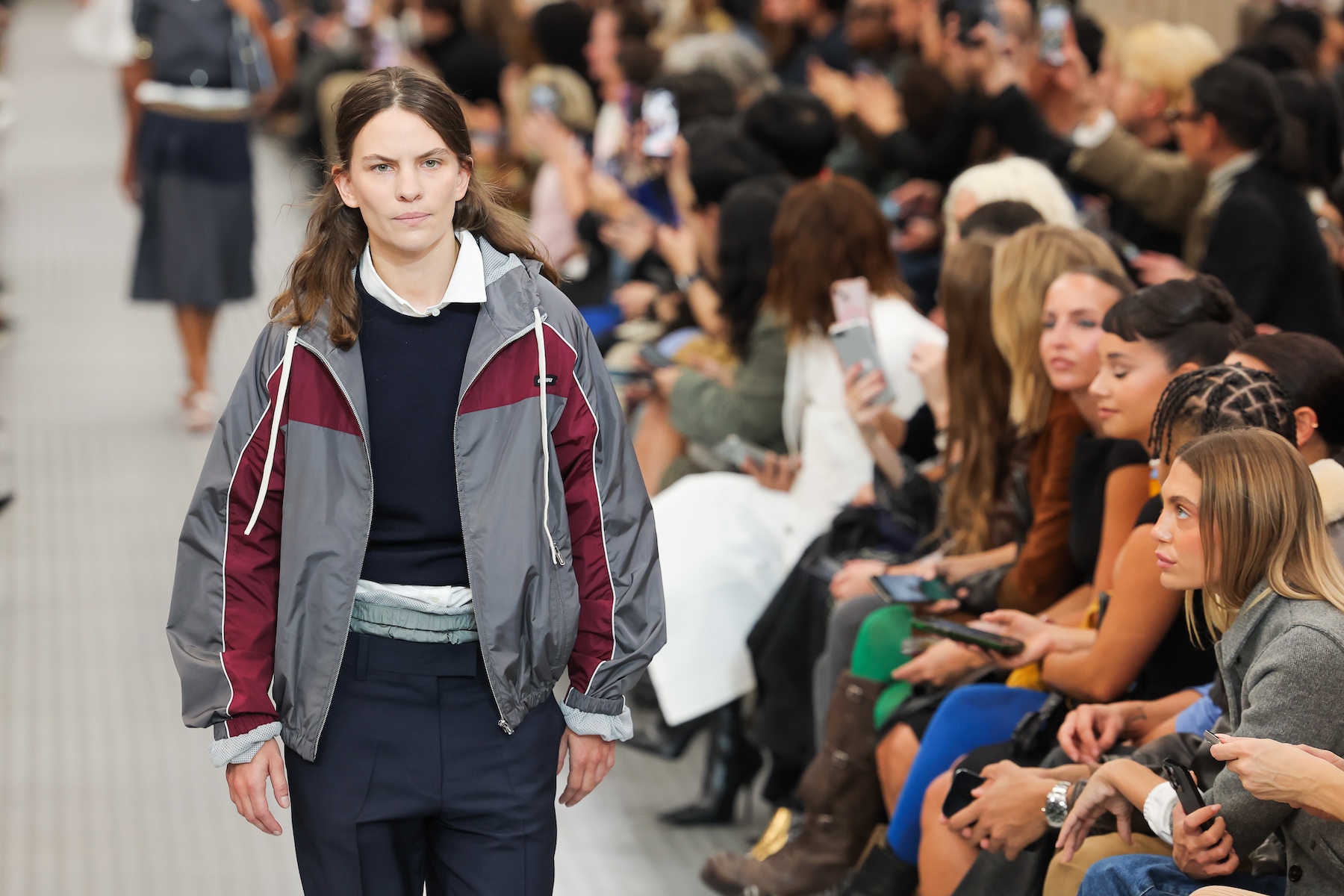 Ten of the best track jackets for channelling a 1970s-meets-1990s cool
Ten of the best track jackets for channelling a 1970s-meets-1990s coolAs a ‘Marty Supreme’ track jacket makes a bid for viral garment of 2025 – thanks to one Timothée Chalamet – the Wallpaper* style team selects ten of the best tracksuit and coach jackets for men and women, each encapsulating an easy, nostalgia-tinged elegance
-
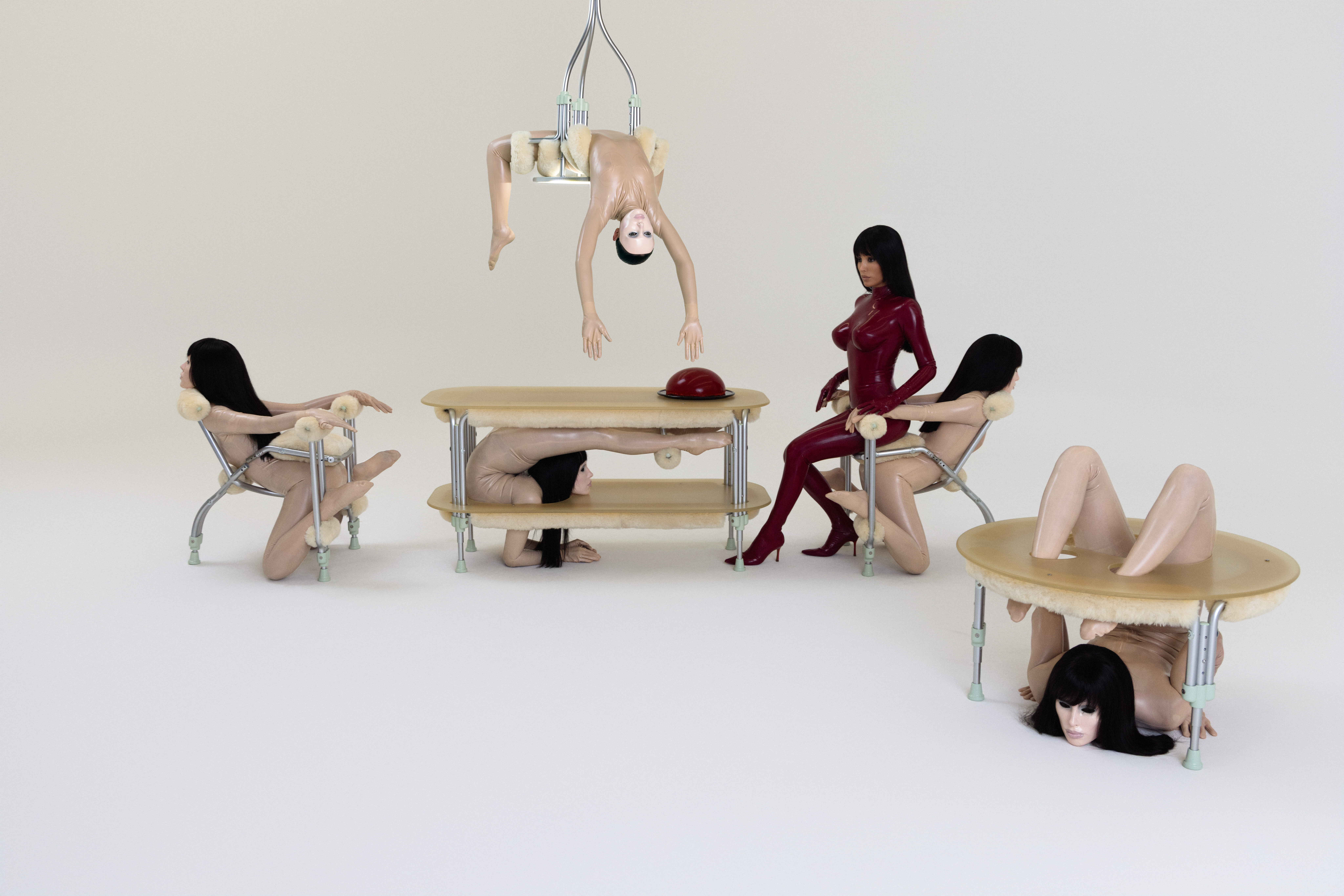 Eight questions for Bianca Censori, as she unveils her debut performance
Eight questions for Bianca Censori, as she unveils her debut performanceBianca Censori has presented her first exhibition and performance, BIO POP, in Seoul, South Korea
-
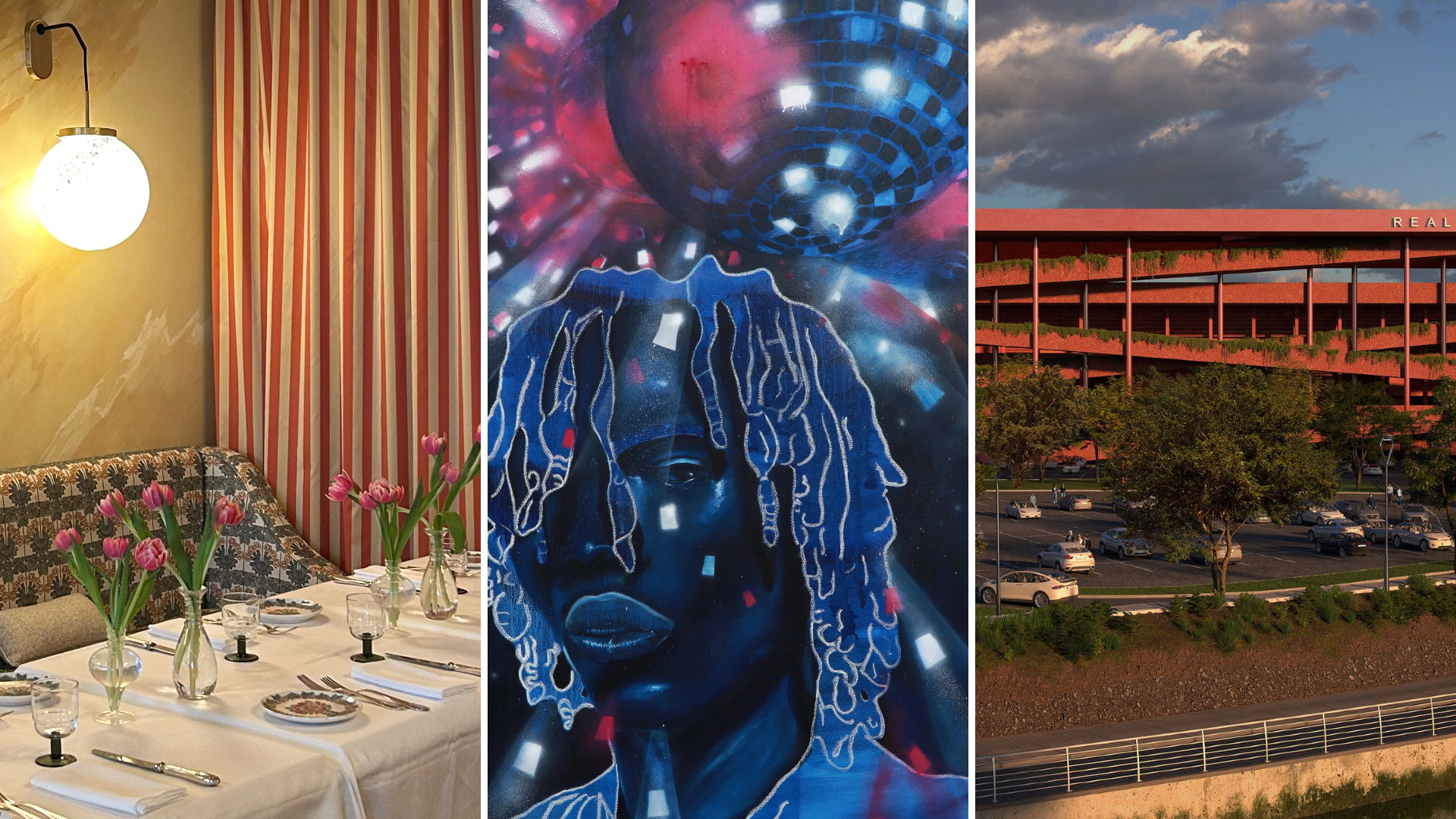 Out of office: The Wallpaper* editors’ picks of the week
Out of office: The Wallpaper* editors’ picks of the weekIt’s wet, windy and wintry and, this week, the Wallpaper* team craved moments of escape. We found it in memories of the Mediterranean, flavours of Mexico, and immersions in the worlds of music and art
-
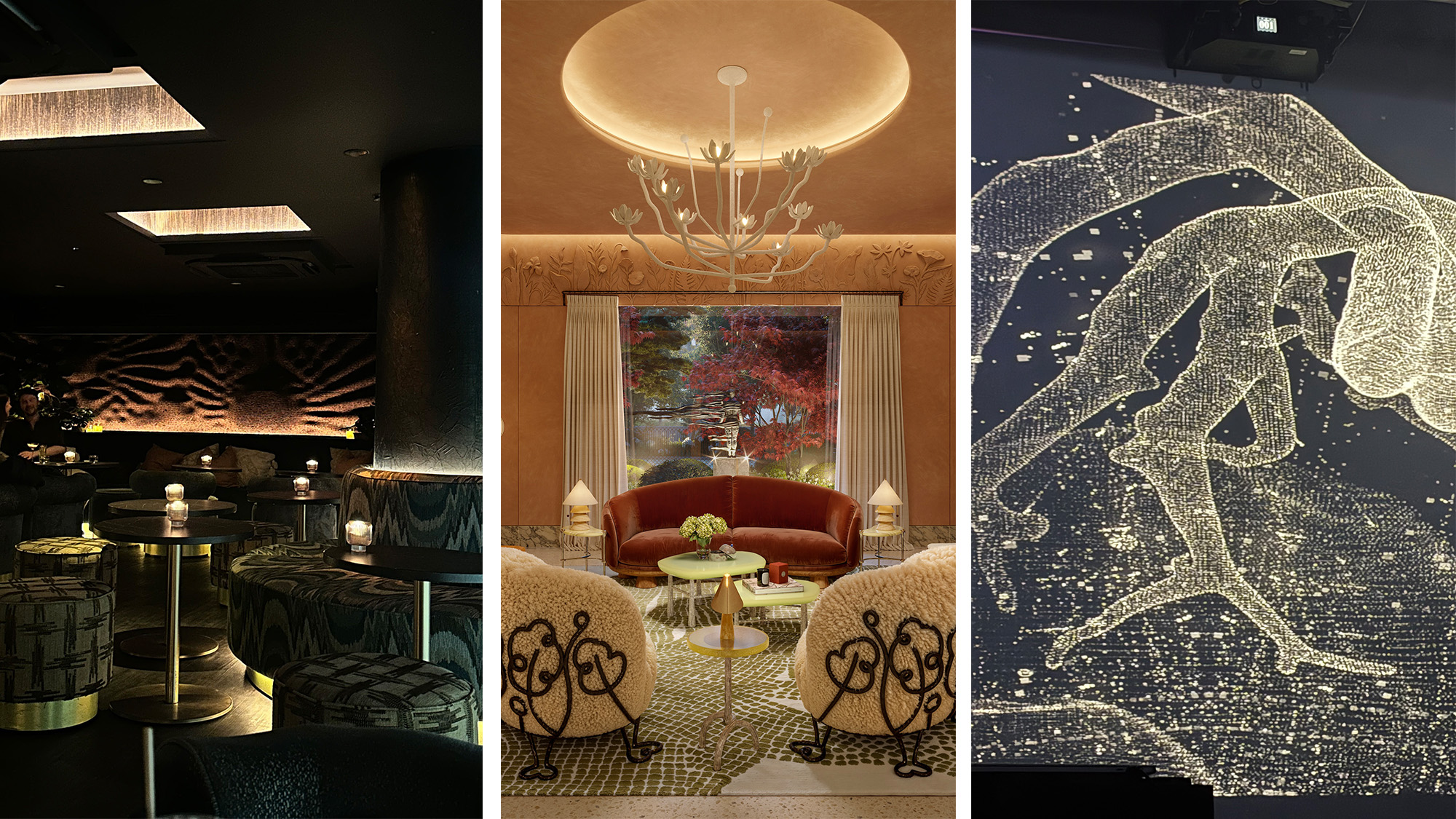 Out of office: The Wallpaper* editors’ picks of the week
Out of office: The Wallpaper* editors’ picks of the weekThe clocks have gone back in the UK and evenings are officially cloaked in darkness. Cue nights spent tucked away in London’s cosy corners – this week, the Wallpaper* team opted for a Latin-inspired listening bar, an underground arts space, and a brand new hotel in Shoreditch
-
 Out of office: the Wallpaper* editors’ picks of the week
Out of office: the Wallpaper* editors’ picks of the weekThis week, our editors have been privy to the latest restaurants, art, music, wellness treatments and car shows. Highlights include a germinating artwork and a cruise along the Pacific Coast Highway…
-
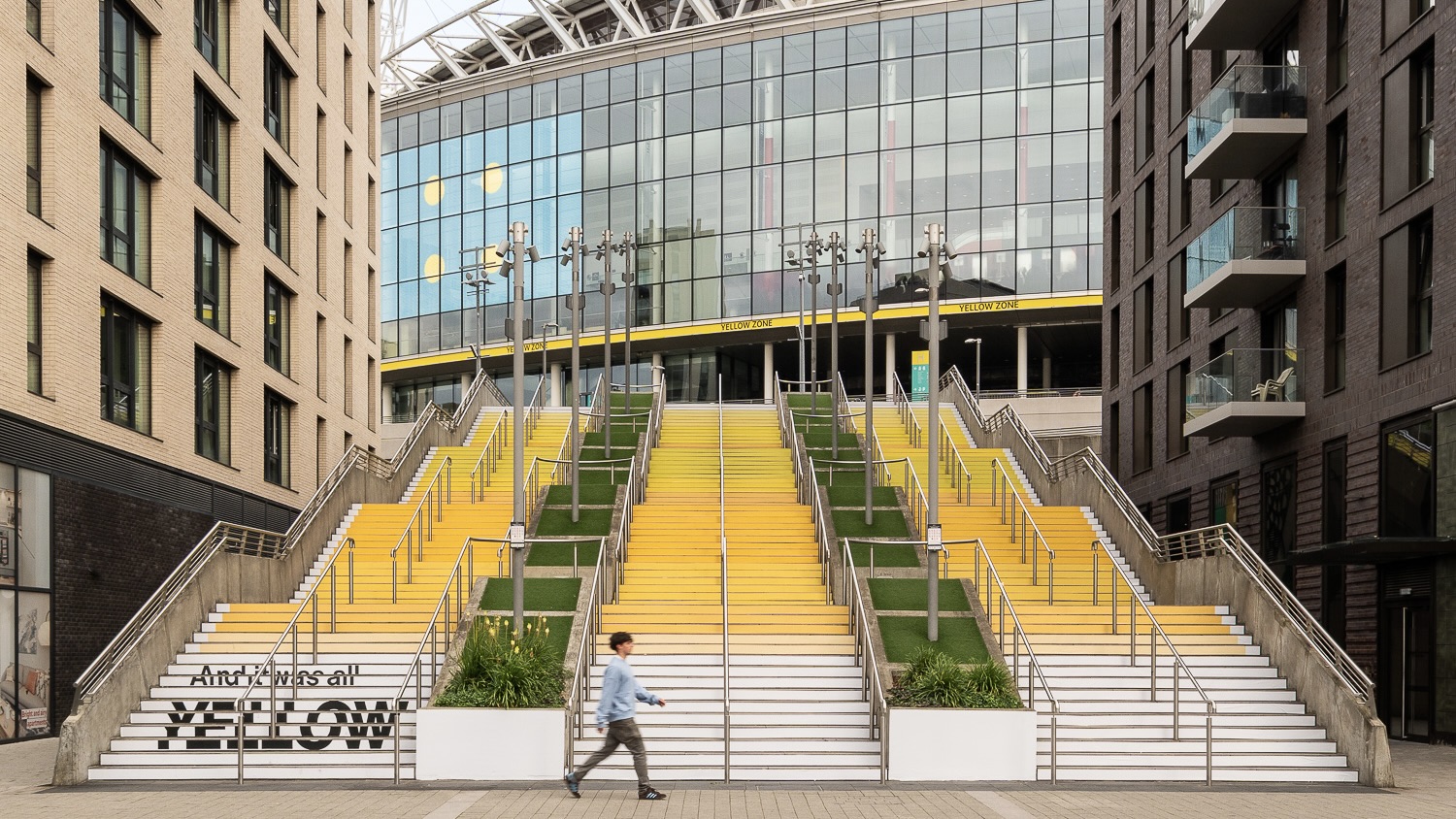 Pantone’s new public art installation is a tribute to Coldplay’s ‘Yellow’, 25 years after its release
Pantone’s new public art installation is a tribute to Coldplay’s ‘Yellow’, 25 years after its releaseThe colour company has created a – you guessed it – yellow colour swatch on some steps in Wembley Park, London, where the band will play ten shows this month
-
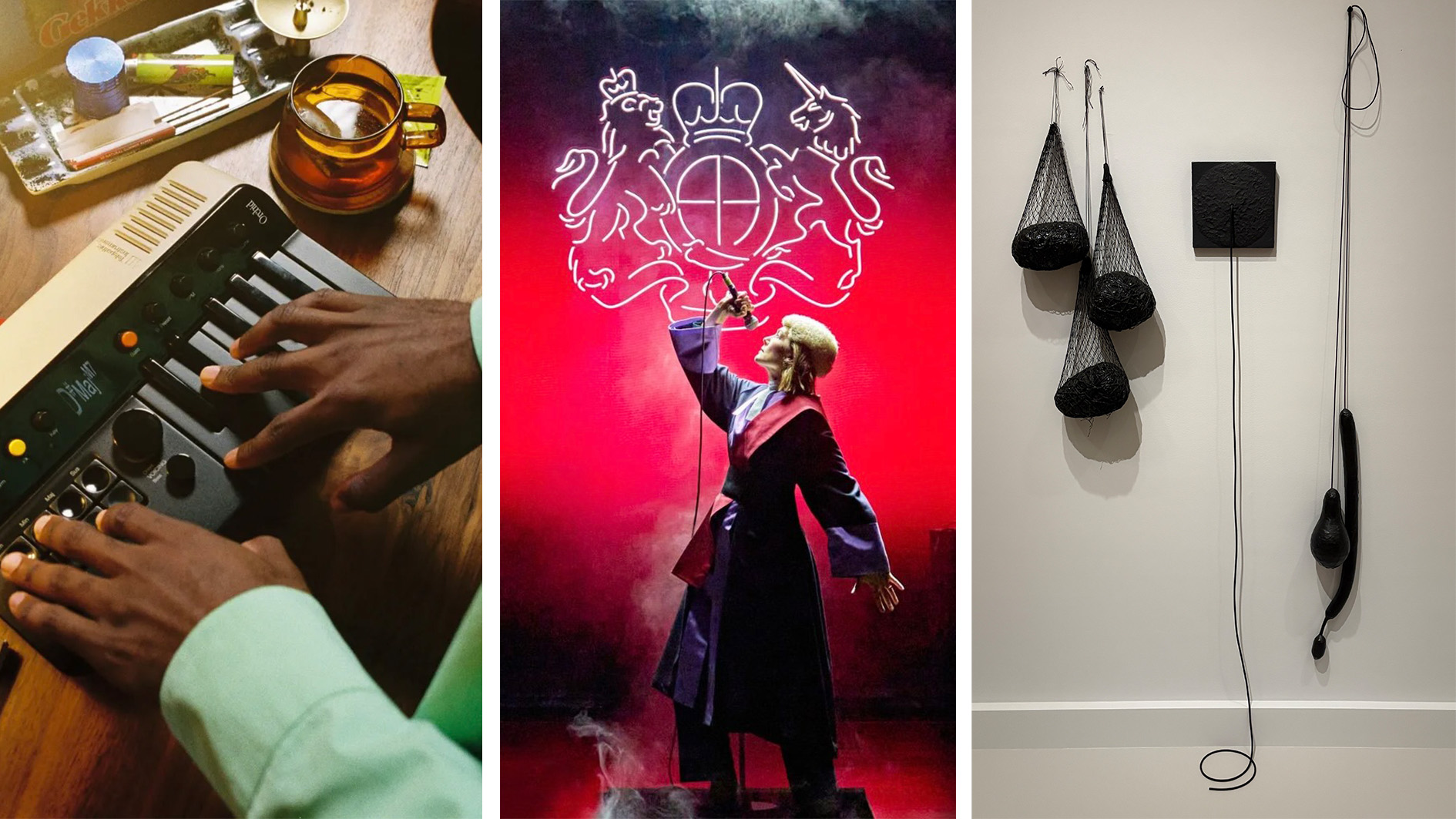 Out of office: the Wallpaper* editors’ picks of the week
Out of office: the Wallpaper* editors’ picks of the weekThe Wallpaper* team immersed themselves in culture this week, attending theatre, music and art performances and exhibitions at some of London’s most esteemed establishments. Along the way, we may have discovered the city's best salad…
-
 The Chemical Brothers’ Tom Rowlands on creating an electronic score for historical drama, Mussolini
The Chemical Brothers’ Tom Rowlands on creating an electronic score for historical drama, MussoliniTom Rowlands has composed ‘The Way Violence Should Be’ for Sky’s eight-part, Italian-language Mussolini: Son of the Century
-
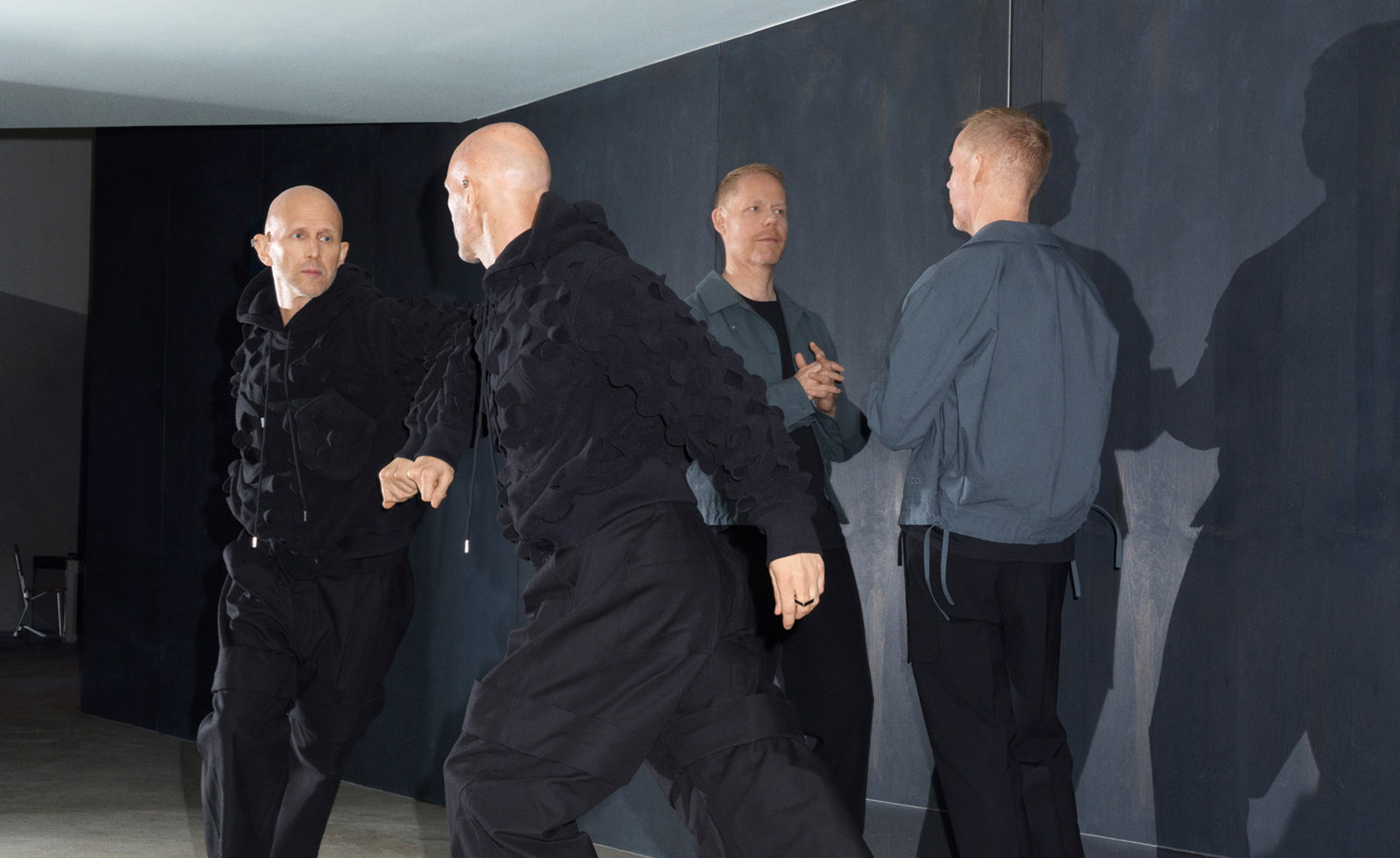 Year in review: top 10 art and culture interviews of 2024, as selected by Wallpaper’s Hannah Silver
Year in review: top 10 art and culture interviews of 2024, as selected by Wallpaper’s Hannah SilverFrom Antony Gormley to St. Vincent and Mickalene Thomas – art & culture editor Hannah Silver looks back on the creatives we've most enjoyed catching up with during 2024
-
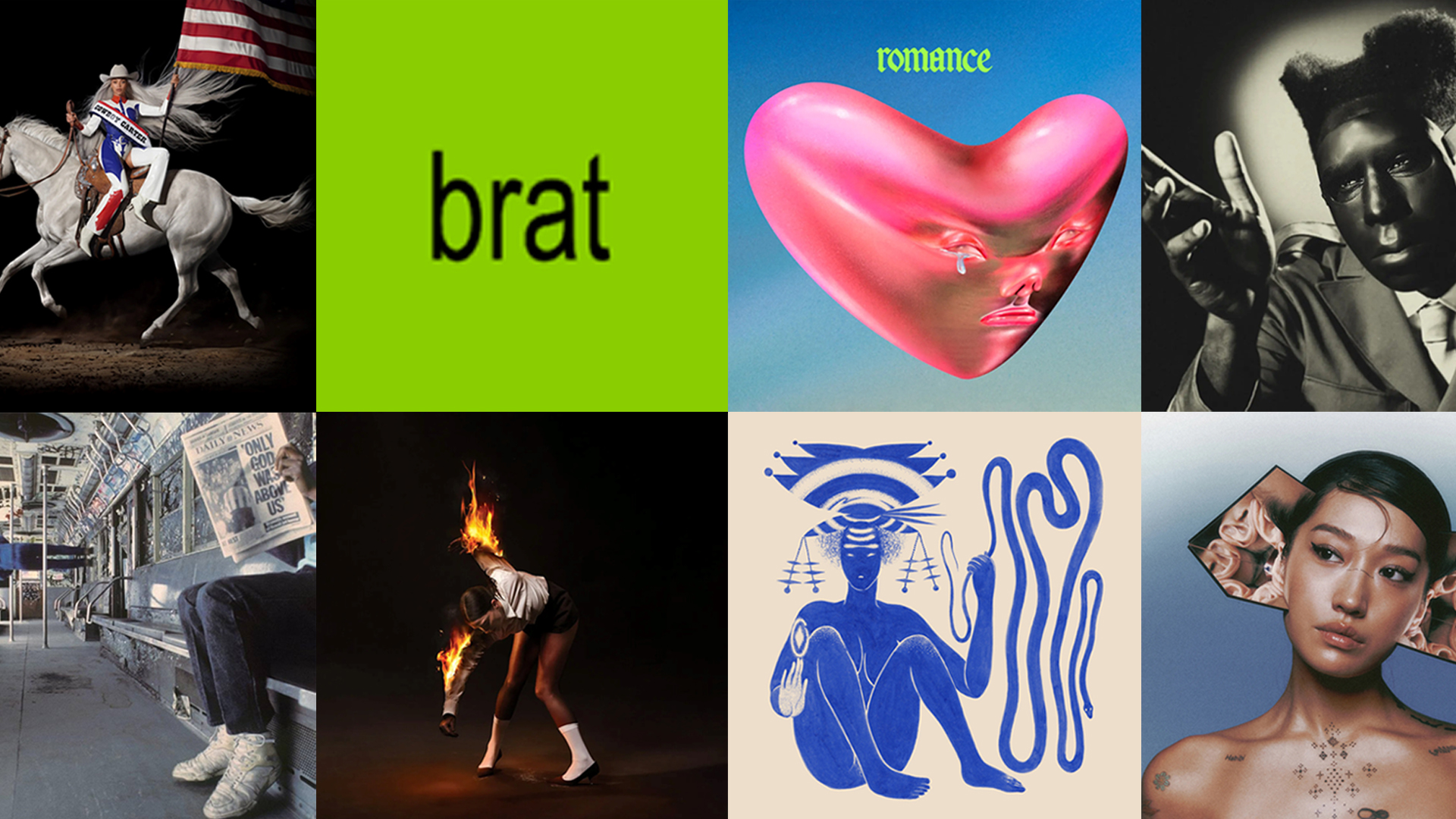 The year's most creative album artwork
The year's most creative album artworkWhile the album cover may be less visible than it was in the age of the music megastore, it's still a vital part of the creative process. Here are our pick 2024's most inspired record sleeves.
